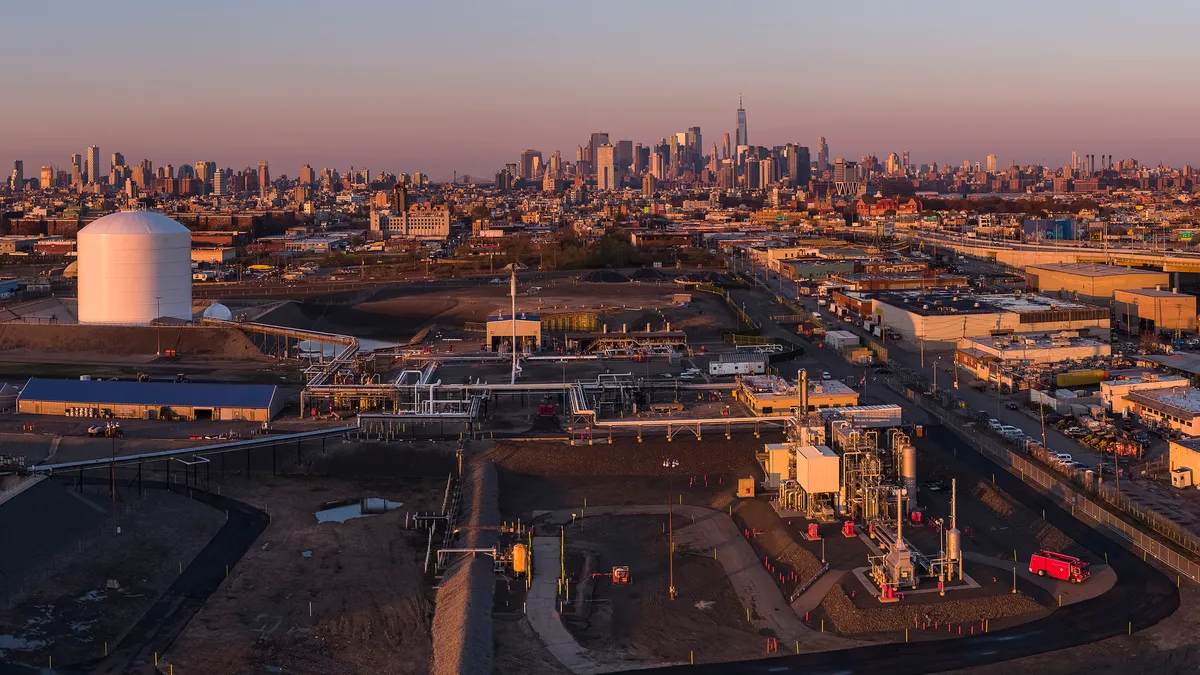Utilities are no strangers to regulation. From worker safety to environmental quality, utilities across the country are subject to a wide range of requirements and restrictions. But while all utilities must comply with a range of regulations, those in New York face a particularly daunting compliance challenge.
Why? The reason is fairly straightforward. New York utilities must comply with regulations from federal organizations, like the U.S. Environmental Protection Agency (EPA) and the Occupational Health and Safety Administration (OSHA), plus those enforced by the state and, in many cases, county and city governments.
“New York City has its own set of rules on top of the federal and state regulations. It makes things a little more complicated and nuanced,” said Heather De Matteo, who is the environmental compliance manager for substations at the New York utility Con Edison, which operates one of the world’s largest energy delivery systems and serves over 10 million customers. “We have a team that is passionate about what they do and want to make sure they are doing things right. But there’s a lot of complexity to getting that right.”
Lessons that apply everywhere
The fact that New York utilities face a particularly stringent regulatory compliance environment means that the processes and tools they put in place have to be particularly robust. Con Edison’s approach to chemical management and reporting provides an example of how the right software and training can improve the accuracy and efficiency of compliance – an approach utility companies anywhere can follow.
For example, one of the tasks De Matteo oversees is the safe storage and removal of oil used at substations throughout the utility’s service territory. Among the many tasks involved with that work is determining whether or not the oil being handled is contaminated with polychlorinated biphenyls, or PCBs, a manmade organic chemical whose manufacture was banned in 1979 because of its potentially adverse health impacts. Each time Con Edison handles a drum of oil or equipment that still has oil in it, the utility has to test whether PCBs are present.
“You have to sample the oil and determine how much waste is there. So we have to figure out the quantity that you have accumulated and then whether it needs a tracking manifest or not depends on that quantity,” De Matteo said. “That labeling and reporting is what you have to do for New York State. Then, if you’re in New York City, there are other aspects to consider. If you’re going to store the oil, it now has to have secondary containment. The sheer job of complying can hit six different regulations depending on how you are storing the oil and where.”
The challenge of multiple jurisdictions
Smoothly handling the data gathering and reporting required to fully comply with regulations overseen by multiple jurisdictions demands a range of resources and well-trained staff. For some utilities, this may not be an issue. But the reality is that implementing solutions that work well in a complex regulatory environment will be particularly helpful in places where compliance is more straightforward.
At Con Edison, there is a mix of internal databases and software to track items like hazardous waste and environmental health and safety. But the utility also relies on third-party partners, like HSI, to inventory chemicals and deliver data efficiently and accurately to regulators.
This is no small matter, particularly when it comes to complying with regulations from the New York City Department of Environmental Protection (DEP). “Our largest facility in the city has maybe 300 chemicals that we have to report on. Those are really intricate inventory reports,” De Matteo said.
Without the help of robust software, the manual effort to fill out and submit the necessary paper reports required by the city would be significant. “Instead of 50 people doing paper copies of reports and mailing them in, it can all be bulk uploaded by one person,” De Matteo said. “That bulk import and the ability to input that information directly with the DEP was our highest priority.”
With configurable software in place, it’s also possible to easily adjust to the differing regulatory reporting requirements of other cities and counties around New York.
The importance of training
Clearly, having the right tools in place is an essential step to efficiently achieving regulatory compliance and that efficiency frees up time for workers to focus their attention on other priorities. But software is only part of the answer. It’s also critical that employees receive effective and ongoing training. This is a job Con Edison takes very seriously. The utility has an entire department and building dedicated to training its staff and works with HSI, which offers a full suite of training and employee development solutions, including e-learning content and learning management software.
Recently, Con Edison has prioritized standardized training. “It’s not just about standardizing through the boroughs and regional areas where we work, but also throughout organizations in the utility,” De Matteo said. “Because we are a multi-commodity utility, we have different operational needs. But the procedures on how to go about certain things like waste disposal are the same. We are trying to organize and standardize to make sure everyone is on the same page and our training and communication really drives that.”
Standardized training gives Con Edison employees the skills and knowledge they need to successfully navigate New York’s complex regulatory environment. It’s also a lesson about the ingredients necessary for utilities to efficiently and effectively achieve compliance in any jurisdiction. After all, if you can make it in New York’s overlapping and demanding regulatory landscape, you can make it anywhere.
Disclaimer: The views and opinions expressed by Heather De Matteo are her own and do not necessarily reflect Con Edison










